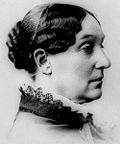- Oregon Ballot Measure 9 (1992)
-
Measure 9 Government Cannot Facilitate, Must Discourage Homosexuality, Other "Behaviors". Election results Yes or no Votes Percentage  No
No828,290 56.47% Yes 638,527 43.53% Invalid or blank votes % Total votes 1,466,817 100.00% Voter turnout undetermined% Election results by county YesNoSource: Oregon Blue Book [1]
Ballot Measure 9 was a ballot measure in the U.S. state of Oregon in 1992, concerning gay rights and public education, that drew widespread national attention.Measure 9 would have added the following text to the Oregon Constitution:
“ All governments in Oregon may not use their monies or properties to promote, encourage or facilitate homosexuality, pedophilia, sadism or masochism. All levels of government, including public education systems, must assist in setting a standard for Oregon's youth which recognizes that these behaviors are abnormal, wrong, unnatural and perverse and they are to be discouraged and avoided. ” It was defeated in the November 3, 1992 general election with 638,527 votes in favor, 828,290 votes against.[2]
Contents
Political context
The ballot measure was an effort of the Oregon Citizens Alliance, a conservative group active in Oregon politics in the 1990s.[3] Supporters of the measure felt that their traditional values were under siege in the face of growing acceptance of homosexuality by society.[4] Opponents stated that the measure was unfairly discriminatory, that it was unconstitutional, and that it demonstrated the homophobia and bigotry of its backers.[citation needed] Republican Senator Mark Hatfield opposed the measure, as did most Oregon newspapers. Opponents outspent the OCA six to one.[5]
The OCA would go on to back Measure 13, which would have prevented schools from using materials that were deemed to "legitimize homosexuality", and Measure 19. They also backed another measure numbered 9 ("son of 9") in 2000. All these were unsuccessful.
Lingering effects
Although the measure failed, its legacy can still be seen today. The Oregon Citizens Alliance went on to introduce a series of watered-down ballot measures along the same lines as Measure 9 (most of which failed). Another response of the OCA was to place laws similar to Measure 9 on local ballots in the parts of Oregon where a majority of voters had supported Measure 9. They succeeded in this effort in Josephine, Douglas, Linn, and Klamath counties, as well as in Canby and Junction City. The state legislature eventually overruled these local measures.[6] On the other hand, opposition to Ballot Measure 9 formed the basis of much of the current gay rights movement in Oregon, including the organization Basic Rights Oregon.[3]
Full text
Be it Enacted by the People by the State of Oregon:
PARAGRAPH 1. The Constitution of the State of Oregon is amended by creating a new section to be added to and made a part of Article I and to read:
SECTION 41 (1) This state shall not recognize any categorical provision such as "sexual orientation," "sexual preference," and similar phrases that include homosexuality, pedophilia, sadism or masochism. Quotas, minority status, affirmative action, or any similar concepts, shall not apply to these forms of conduct, nor shall government promote these behaviors.
(2) State, regional and local governments and their properties and monies shall not be used to promote, encourage, or facilitate homosexuality, pedophilia, sadism or masochism.
(3) State, regional and local governments and their departments, agencies and other entities, including specifically the State Department of Higher Education and the public schools, shall assist in setting a standard for Oregon's youth that recognizes homosexuality, pedophilia, sadism and masochism as abnormal, wrong, unnatural, and perverse and that these behaviors are to be discouraged and avoided.
(4) It shall be considered that it is the intent of the people in enacting this section that if any part thereof is held unconstitutional, the remaining parts shall be held in force.[7]
See also
- List of Oregon ballot measures
- Oregon Ballot Measure 19 (1994)
- Oregon Ballot Measure 9 (2000)
- Ballot Measure 9, a 1995 documentary about the measure
References
- ^ "Initiative, Referendum and Recall: 1988-1995" (Website). Oregon Blue Book. Oregon Secretary of State. 4 November 2008. http://bluebook.state.or.us/state/elections/elections21.htm. Retrieved December 24, 2008.
- ^ Oregon Blue Book: Initiative, Referendum and Recall: 1988-1995
- ^ a b Wentz, Patty. "Homophopia hits home". Willamette Week. http://www.wweek.com/html/25-1992.html#oca. Retrieved 2007-05-05.
- ^ del Mar, David Peterson. Oregon's Promise: An Interpretive History. Oregon State University Press (2003) p. 264-265.
- ^ del Mar, David Peterson. Oregon's Promise: An Interpretive History. Oregon State University Press (2003) p. 265.
- ^ del Mar, David Peterson. Oregon's Promise: An Interpretive History. Oregon State University Press (2003) p. 265.
- ^ Oregon Voters' Pamphlet, November 3, 1992, p. 93, hosted at the Benton County Elections Division website.
Topics in Oregon legislation Crime and sentencing Capital punishment · Measure 11 (1994) (mandatory minimum sentencing) · Measure 40 (1996) etc. (victims' rights) Abigail Scott Duniway was instrumental in establishing women's right to vote in Oregon.
Abigail Scott Duniway was instrumental in establishing women's right to vote in Oregon.
Elections and voting Gay rights Environment Land use Health care Minimum wage Taxation Tax revolt · Measure 5 (1990) (landmark tax law) · Measures 47 (1996) and 50 (1997) (adjusted Measure 5) · Kicker (tax rebate)Miscellaneous Influential people Background, further reading Categories:- LGBT law in the United States
- Oregon ballot measures
- Oregon 1992 ballot measures
- 1990s in LGBT history
- LGBT in Oregon
Wikimedia Foundation. 2010.

